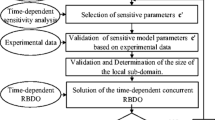Abstract
This paper presents two concurrent engineering tools for serving in process planning. The first one, as “design for manufacturing” utility, evaluates critical interactions between several types of machining features (i.e., holes, pockets, etc.) on prismatic parts, and modifies original design (if possible) and reflects the modifications to all down- and up-stream stations in CAD/CAM integration. The second one is for group technology and flexibility, by which products are designed according to the existing manufacturing system. Methodologies of the developed systems are illustrated with several examples throughout the paper.
Similar content being viewed by others
References
Baykasoglu, A. and Gindy, N. (2000) MOCACEF 1.0: capability based approach to form part-machine groups for cellular manufacturing applications. International Journal of Production Research, 38(5), 1133–1161.
Baykasoglu, A., Gindy, N. N. Z. and Cobb, R. C. (2001) Capability based formulation and solution of multiple objective cell formation problems using simulated annealing. Accepted for publication. Integrated Manufacturing Systems: The International Journal of Manufacturing Technology Management.
Baykasoglu, A. (1999) Multiple objective decision support framework for configuring, loading and reconfiguring manufacturing cells, Ph.D. Thesis, University of Nottingham, Department of Manufacturing Engineering and Operations Management, England, April 1999.
Beer, F. P. and Johnston, E. R. Jr. (1992) Mechanics of Materials, McGraw Hill, Singapore.
Dere, M., Dereli, T. and Filiz, I. H. (1997) A feature-based “design for manufacturing system” to 3–axis CNC cavity machining. Proceedings of 22nd International Conference on Computers and Industrial Engineering, December 20–22, Cairo, Egypt, pp. 671–674.
Dereli, T., Filiz, I. H. and Saruhan, T. (1997) Automatic determination of critical regions between interacting features on prismatic components. Proceedings of CARS&FOF'97, Robotics and Factories of the Future, Colombia, December 15–17, 1, pp. 396–401.
Kusiak, A. (1993) Concurrent Engineering: Automation, Tools, and Techniques, Wiley, USA.
Kusiak, A. and Lee, H. (1996) Neural computing-based design of components for cellular manufacturing. International Journal of Production Research, 34(7), 1777–1790.
Mill, F. G., Salmon, J. C. and Pedley, A. G. (1993) Representation problems in feature-based approaches to design and process planning. International Journal of Computer Integrated Manufacturing, 6(1/2), 27–33.
Nevins, J. L., Whitney, D. E. and Defazio, T. L. (1989) Concurrent Design of Products and Processes: A Strategy for the Next Generation in Manufacturing, McGraw-Hill, New York.
Nnaji, B. O. and Liu, H. (1990a) A product assembly modeller. Proceedings of the 1st International Conference on Automation Technology, Taipei, Taiwan, July 4–6, pp. 455–464.
Nnaji, B. O. and Liu, H. (1990b) Feature reasoning for automatic robotic assembly and machining in polyhedral representation. International Journal of Production Research, 28(3), 517–540.
Nnaji, B. O., Kang, T., Yeh, S. and Chen, J. (1991) Feature reasoning for sheet metal components. International Journal of Production Research, 29(9), 1867–1896.
Okogbaa, O. G., Chen, M., Changchit, C. and Shell, R. L. (1992) Manufacturing system cell formation and evaluation using a new inter-cell flow reduction heuristic. International Journal of Production Research, 30(5), 1101–1118.
Pennell, J. P. and Winner, R. I. (1989) Concurrent engineering: practices and prospects, Proceedings of the IEEE Global Telecommunications Conference and Exhibition, Piscataway, NJ, USA, 1, pp. 647–655.
Schrage, L. (1984) Linear, Integer and Quadratic Programming with LINDO, Scientific Press, Palo Alto, CA.
Shah, J. J. and Rogers, M. T. (1988) Feature based modeling shell: design and implementation. Proceedings of the 1988 ASME International Computers in Engineering Conference, 1, 255–261.
Sohlenius, G. (1992) Concurrent engineering. Annals of CIRP, 41(2), 645–655.
Yue, Y. and Murray, J. L. (1994) Validation, workpiece selection and clamping of complex 2.5D components, in Advances in Feature Based Manufacturing, Shah, J. (ed.), Elsevier, Netherlands, pp. 185–213.
Author information
Authors and Affiliations
Rights and permissions
About this article
Cite this article
Dereli, T., Baykasoğlu, A. Concurrent engineering utilities for controlling interactions in process planning. Journal of Intelligent Manufacturing 15, 471–479 (2004). https://doi.org/10.1023/B:JIMS.0000034110.13907.5b
Issue Date:
DOI: https://doi.org/10.1023/B:JIMS.0000034110.13907.5b




